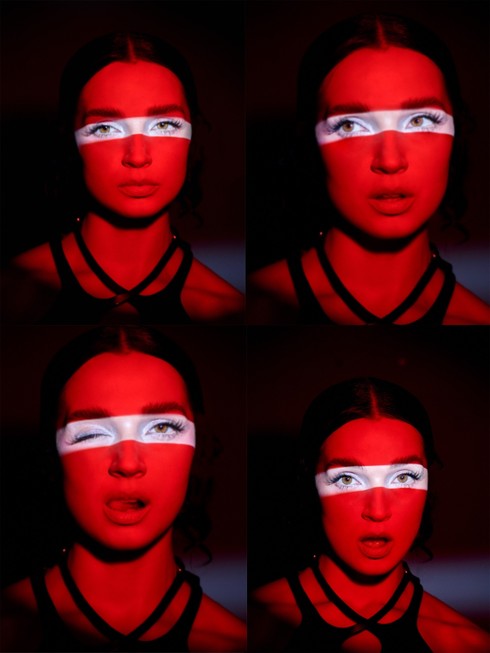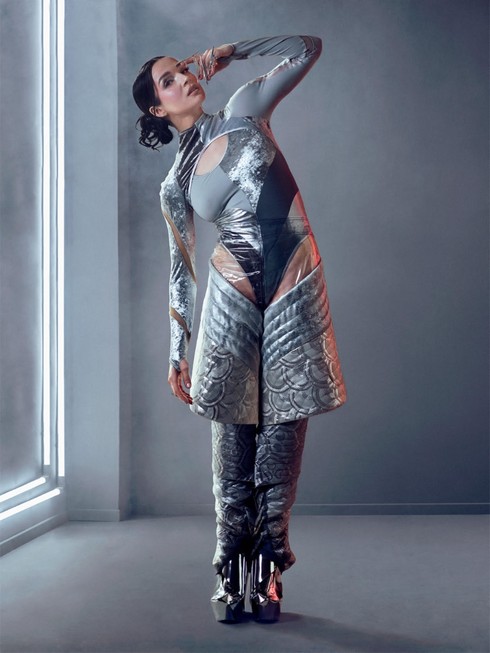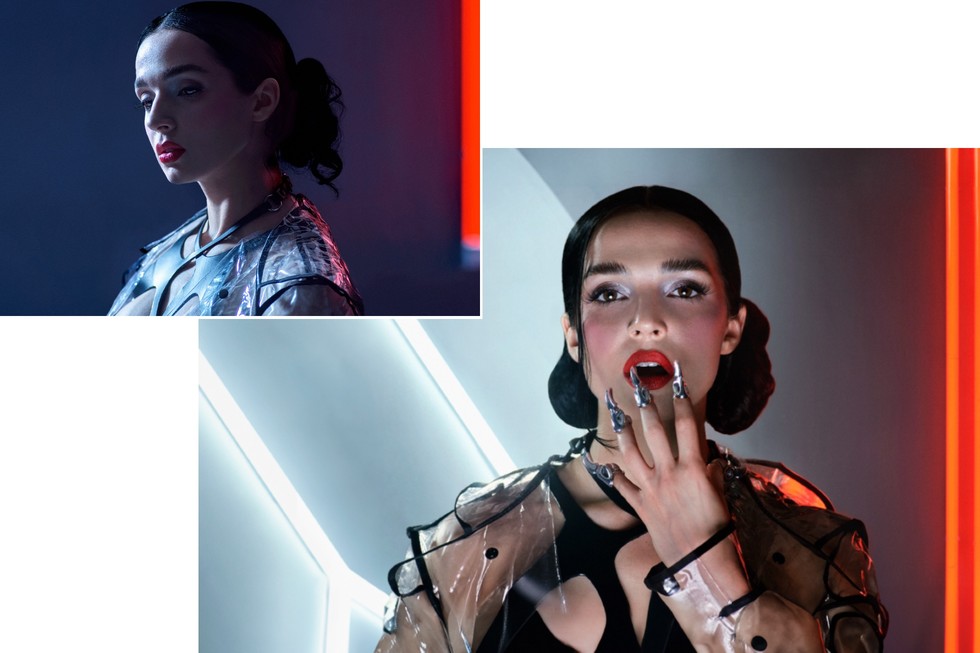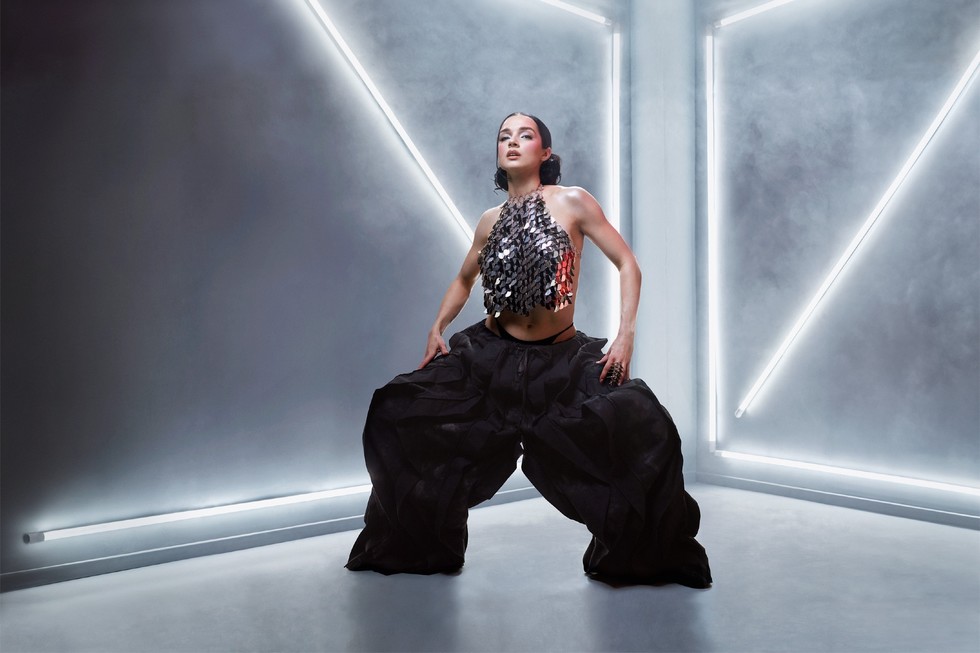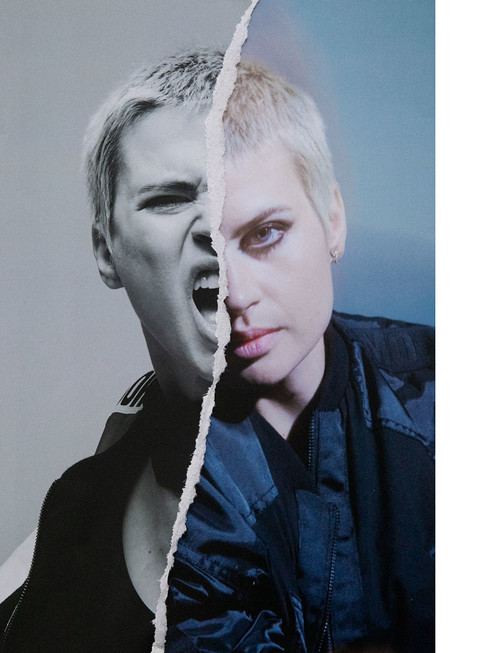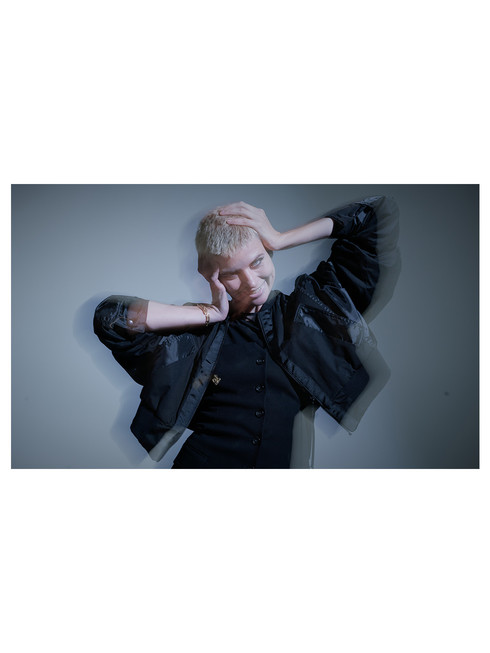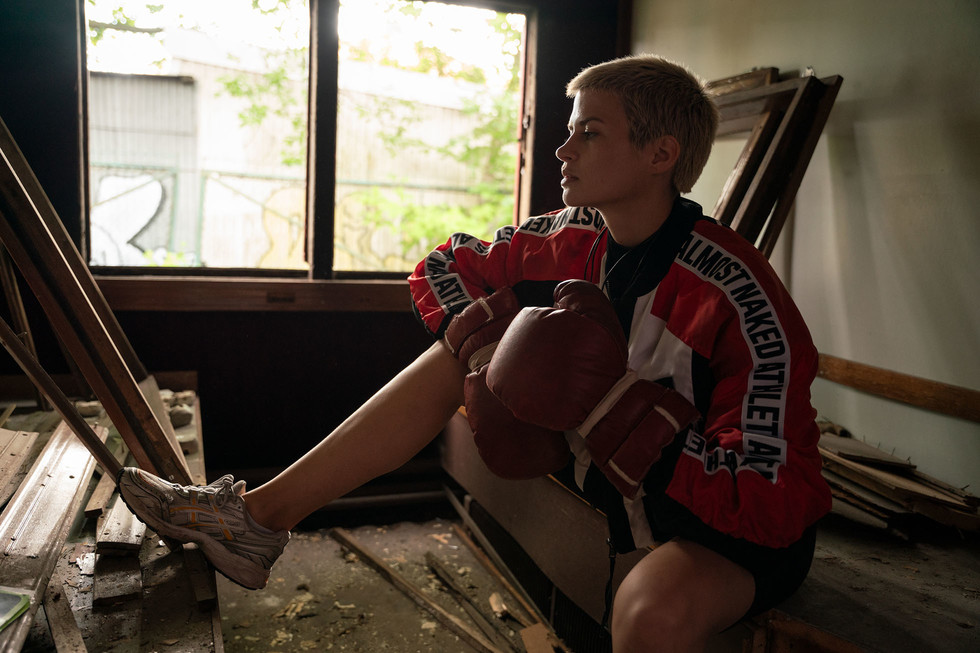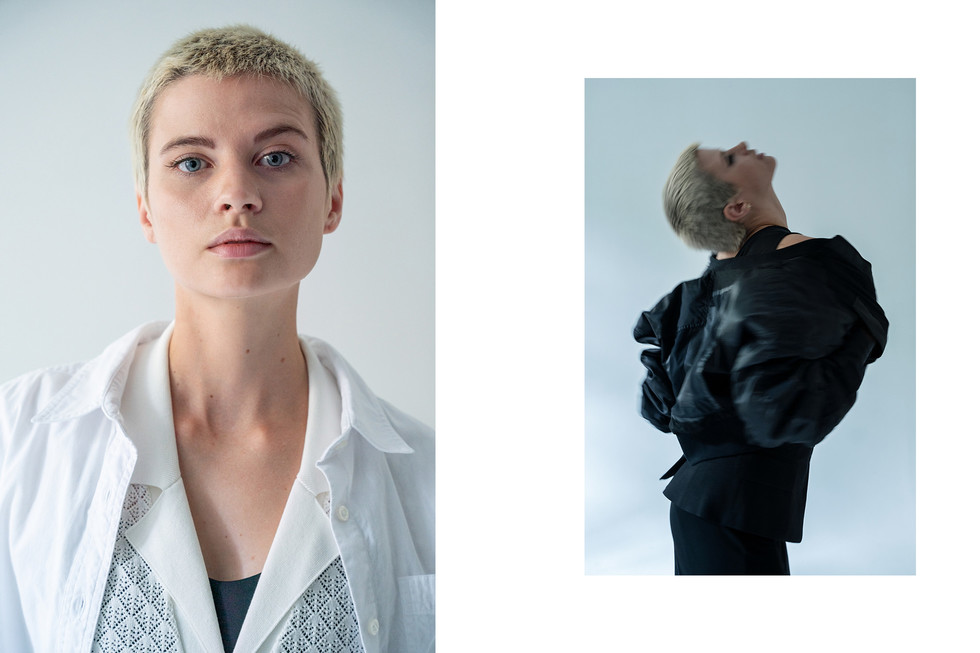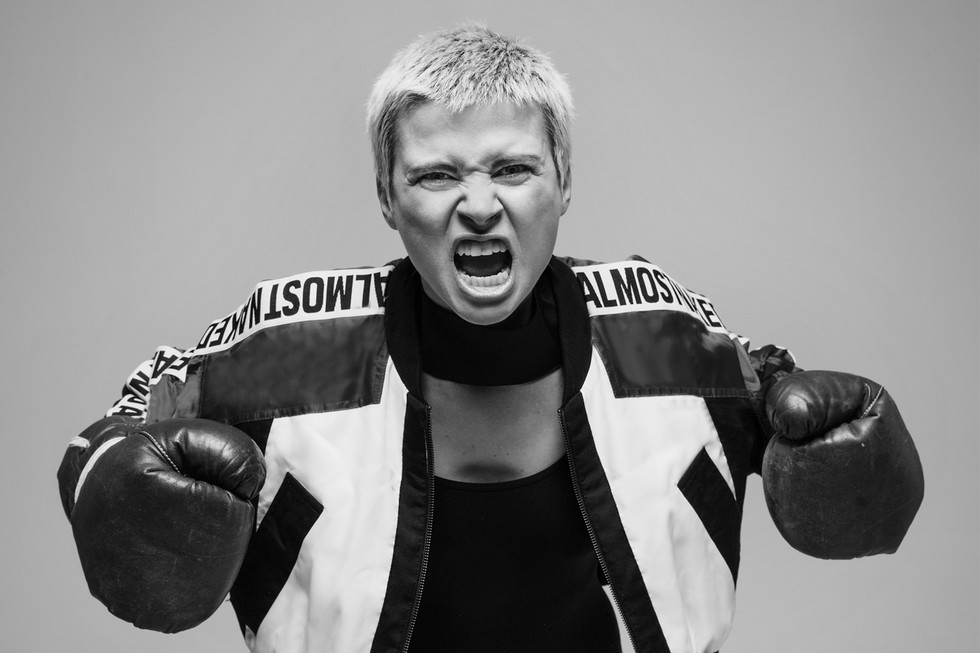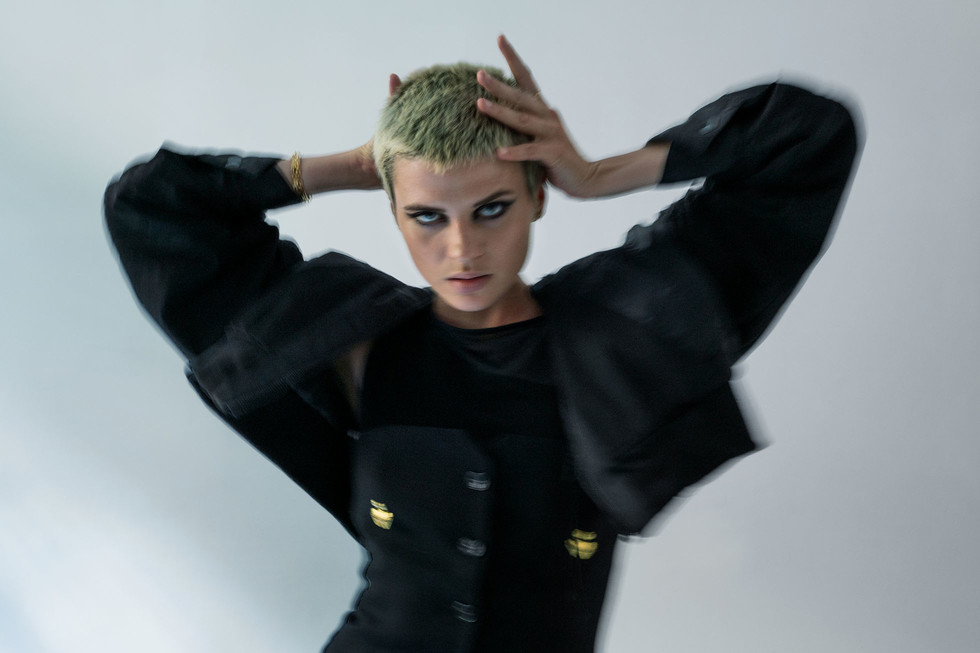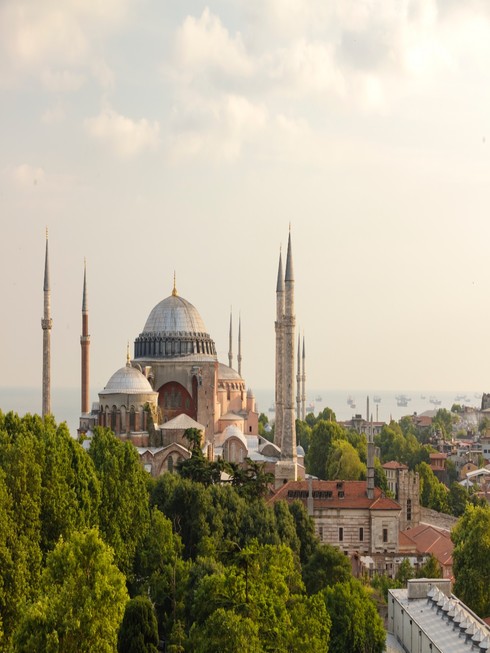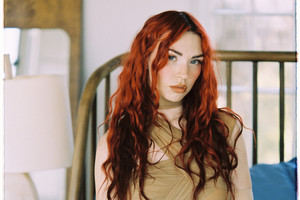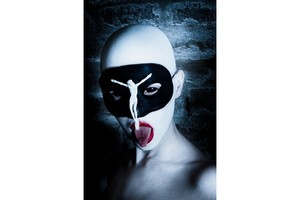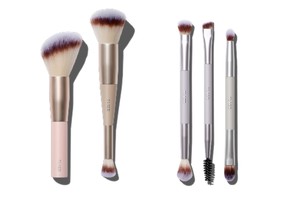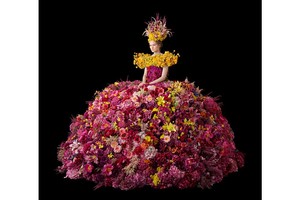Unveiling 'Zig': inside Poppy's journey towards herself
Written by Natalia Muntean by Filippa FinnPoppy, also known as Moriah Rose Pereira, has navigated a career as fascinating and unexpected as the enigmatic content she creates. From launching her Youtube channel in the mid-’10s, to her eccentric debut album 'Poppy.Computer,' reflecting her peculiar robot-voiced videos, to the more musically compelling 'Am I A Girl?' featuring collaborations with industry luminaries like Grimes and Diplo, her evolution has been a kaleidoscope of innovation. Now, with her fifth studio album 'Zig,' released on October 27th, the 28-year-old artist continues her zigzag trajectory. The album, while representing the duality of her spirit, also reveals a more liberated and outspoken Poppy.
We sat down for a conversation during which the LA-based artist shared insights into her formative years in Nashville, the evolving musical influences stemming from her family background, and the pivotal moments that shaped her trajectory in the music industry.
Who is Poppy?
Singer, songwriter, artist, multi media creator.
You grew up in Nashville, surrounded by music, with your father as a drummer in a punk band. How did your family's musical background influence your journey into the music industry?
I recall that it was nice to have music around in the house, but my memory is a bit spotty. Their interests didn't directly influence mine; I was on my own path to discovery. It was convenient to have a recording studio in the house, but I was too young to use it much when I lived with them. I have vague memories of recording as a baby. However, it wasn't until I started my own journey when I was 15 and moved out that I could truly come into my own, I feel.
And then how when did you realise that music was what you wanted to do? Because I know you started with a YouTube channel.
I was always into music, but there was a period when videos took precedence or had more prominence than the music. I remained a recording artist during that time. However, things became more real for me when I moved to Los Angeles.
Can you walk us through your creative process when writing a song? Do you have a specific approach or routine, and where do you draw inspiration for your lyrics and melodies?
It depends on the day, and it depends on the task at hand. A lot of it is in experimenting, I think you find the most unexpected and interesting things when you're not trying for them sometimes. So I think it's the artist’s responsibility to always evolve and pose a question to the world. But for me, I keep journals, and try to read and watch as many films as I can, and find things that pique my interest and lean into that. But as far as the process itself, I try to keep people around me. Collaborative partners that are friends first, but also trustworthy individuals and people that push me to be better every day on a personal level, but also a creative level. When you have a strong connection with such people, as I do with those I work with, it encourages greater honesty in your art.
So you always work on songs together? Even when you're drafting lyrics? Or do they come in at different stages?
Yes, they come in at a bit of a later stage, the skeleton of the idea usually will start for me, if it's a riff, or if it's a lyrical bid, or concept, or something that I just want to explore. And I have gotten better over the years at articulating to them and to people that are better at instruments than I am exactly what I'm looking for. And sometimes you go down a path, that's not necessarily the right one, but you have to go down it in order to know it's like, with anything, when you're trying things out. Sometimes you have to be more in the centre of the storm to know if it's for you or not.
Yes, for sure. You mentioned that films and books inspire you: what were the latest ones that left a mark on you?
I watched a film last night that was pretty perverse, controversial, and edgy. It was called “Angst” from 1983, based on a true story, so it was very impactful. I also recently watched another film called “Sick of Myself,” which I enjoyed a lot. That was great. But one of my all-time favourite movies is “Amelie” or “Leon: The Professional.” I see a lot of myself in these characters.
Can you expand a bit on that?
In “Leon: The Professional,” I love Natalie Portman. I believe she's one of the greatest actresses ever. I really admire the independence she portrays as a young girl, something I identify with. She seems more self-assured than I was at her age. I appreciate her independence, curiosity, and her connection to her plant. She seems very empowered, which is wonderful. Then there's “Amelie”; I think it's the tone, the soundtrack, and how things unfold unexpectedly. The beautiful colour palettes and the film's elegance really stand out.
I agree. And then when you were working on were there any specific movies, albums books that you drew inspiration from or that you listen to maybe, or rewatched. I would like to understand what your universe was like…
It's been a while since I made it, so it's hard to remember everything I was into at that time. But I've mentioned in a few interviews that I'm a big fan of Marianne Faithfull, not just as an actress but also for her musical project, especially the film “Girl on a Motorcycle” also known as “Naked under Leather”. I'm a really big fan of that film. I find it interesting that it's sometimes categorised as soft porn, but I personally think it's a very romantic film. She's strong, empowered, and inspiring. The song “Motorbike,” which I'd describe as the most vibrant song on the entire record, has a lot of dark undertones compared to the other songs on “Zig.”
At that time, I was also listening to an album by an artist called Venetian Snares. He's Canadian and has been an inspiration for me for a while. I remember rediscovering his music while making “Zig,” and I love his album “Your Face.” It's kind of breakcore, I guess.
In one of the articles I read about you, someone described your public persona as quirky and unconventional? And I'm curious how much of that is a choice that you're making? Or is it an organic expression of your personality?
Over the years, I've always said this because people are always trying to find where there's a line and one ends and another begins. But it's very much Poppy. And it's me. There isn't a definitive, I think people need to get more comfortable with the fact that things aren't definitive. I, as a person, like swings, I like black and white, but I also find a lot of fun within the grey areas.
I also read that your parents had a haunted house. And then sometimes you played roles in them. So I'm, I'm interested in how your curiosity for fear manifests itself in your art, and how it drives your creative process?
I think a lot of it's like unconscious influence. I think fear is fascinating to me, because it's unexpected. Rock, metal, and heavy music are fascinating to me, because at one point, they were unexpected. And I think bleeding into that is, it's fun and exciting because it creates a vulnerability with people. And there are different kinds of horror that evokes different kinds of fears, such as anxiety or a sudden jump scare that spooks you quickly. My favourite time of the year is Halloween because of these elements. I like the gore of it. I think there's a lot of things that I've seen on the internet over the years that probably I shouldn't have seen in terms of gore.
And how has that influenced your, your art or your creative process? Or do you think it has influenced your music?
I think it's all unconscious. It’s influenced me in ways that I can't put my finger on yet, but I think it's there. I feel it. And it's all just based off of fascination and intrigue, so far is leaning into what you're interested in.
But is it fear? Or is it more curiosity or intrigue that drives you?
Oh, intrigue, for sure. Yeah, the fear thing is completely separate. That was just, I find it to be a fascinating emotion. But as far as the fuel to create is interest.
In an interview from December 2022, you mentioned that a spiritual healer identified the chronic pain in your throat as a result of not speaking up. Can you tell me a bit more about that experience?
I like a lot of experimental and holistic science, medication, and concepts. I think in December 2022, I was reflecting on the past, taking stock of my life. I believe it manifests in certain ways; when in compromising situations or influenced by people not considering your best interest, historically, I might have stayed silent about things I should've spoken up about. And I expressed that to this person. And they said, that, you know, the pain that you have in your throat could be from holding back and not speaking up, not speaking your truth and saying it was your whole chest as they say. So now I can't be stopped. Now I can't stop telling people what I think.
How are things now almost a year down the road from that revelation?
I have an easier time saying no. Over the years, getting no is easier and easier. The more in touch you are with yourself, I believe. There's a shorter list of what I will accept.
But I'm also curious how this revelation has influenced your artistic journey? The fact that you speak up more, and you're more comfortable with that.
I think it's just influenced it in ways that I'm still coming around to realising. But I feel lighter now than I did previously.
Can you share any insights into the musical themes of Zig? And about the inspiration behind it and the creative process, the experiences that brought you to having this album?
I think on the record as a whole, there's a lot of acceptance and empowerment. And there are stories about a love journey, and relationships, whether they're romantic or just friendly, and learning about myself within that and how I operate.
You mentioned writing, and then I'm curious if you write the songs because you realise something about yourself or about the world, and then you want to share it with more people, or are you writing because you want to understand and then writing helps writing songs helps you in that process?
I think creating anything is just a greater effort to understand yourself better. And then in turn, when you put it out, and people hear it, whether it'll resonate with certain people at a deeper level, and others, and those are the ones that end up coming back for more, because they like your perspective. So I think, with Zig, after it was done, because I've been holding on to it for a second, now certain topics became more clear to me after. And that's what I find very interesting about music, and art as a whole. Sometimes you don't know what you're writing about, or expressing until it's done, and you look at it as a whole picture. And then you realise, oh, I was talking about this.
So it's a bit of intuition embedded in the whole process? And how do you know when a song is done, or an album is done, and that you have to, like, just let it you know, go into the world?
I think it's all a feeling that you get. And it's hard to articulate exactly what that is. But I'm sure if you've made something that you're proud of, like you've probably felt it.
If you could pick one song from Zig, that's your favourite, or the one that you're most proud of? What would that one be? And why?
Well, it's hard to choose because each song has its own reasons for being on the album. But I'd say “Church Outfit” and “Attic” for their lyrical depth and vulnerability. “Church Outfit” for the way that it came to be. I've mentioned this story in a couple of other interviews, but it was an idea I brought into the studio, and we wrote the entire song in one go. After recording it, we actually forgot about it for a month or two. And then I had the idea again, completely forgetting that we wrote the song already. When I heard it again, I was really pleased and thought it deserved a place on the album. I also love the production on that song.
Sounds like this idea really needed to become a reality. Speaking about the visual aspect of the album, how do you think the cover and the visual elements contribute to the whole storytelling of the album? Can you tell me a bit about the process of how you decided on the visual elements of this album?
Well, duality is one important element. Also, it's part one of part two in this chapter for me. Visually, I felt the music videos needed a lot of dancing and movement, which is something I've been playing with for the past couple of years. I met a choreographer named Zoe, who has been very inspiring and wonderful to collaborate with.
And if you could choose one lyric that you relate to the most from the whole album, would you be able to do that or something that resonates to you the most?
The first one that comes to mind is: take all my rage and stuff it down, call it by its name or something else, it'll change what it becomes. So if you suppress anger, it'll just change its form. It'll surprise you when it comes back out and re-emerges. So, you better figure it out right now. “What it becomes” is the name of the song.
Sounds like it's a song about rage?
It's not entirely about rage. I don't like to delve too deeply into what the songs mean because I believe it does a disservice to the listener if they were to apply their own meanings to it. But lyrically, that line is about rage.
How long did you work on the album?
I believe it was between December 2021 and March 2023. But I changed the tracklisting a bunch of times in between then. And record labels a couple of times. So that was fun.
I can imagine it's been a process… And you said this is part one of two parts. So will there be a follow up?
There's another component to “Zig”. When you Zig you have to Zag as well.
And will that be like? I assume you already have an idea about it?
Definitely! I know what she is.
And looking back at your whole career, how would you say that your style has changed? Could you talk a bit about your journey, how do you see yourself now after all of these years of having records and producing music and writing?
I see myself as somebody that's constantly learning and I want to always be that way. I want to always learn from people that are better than me at things that I'm interested in. And I want to absorb as much information as I can, and try things that I've never done before. And constantly explore.
I saw that you will go on tour as well at the beginning of next year. How do you aim to connect with your audience during the tour, and are there any specific messages that you want to convey to your fans?
I'm excited to be there. I'm heading to Europe with Bad Omens. Then I'll have my own headlining shows in the UK for Zig. It's the initial part of the tour and for the sake of support. It's thrilling for me. Playing shows excites me; it's one of my favourite things to do. I feel fortunate to do it.
Why do you like playing shows?
Because it's an immediate response and reaction, and there's no screen or anything in between you and the audience. So you can get the immediate response from the people that are standing right in front of you.
And how do you feel about the album being launched?
I feel like it's time for it to come out. I feel like it's great. And it's exciting.
What are your creative aspirations for the future? And are there any specific collaborations or genres or projects you'd like to explore in your upcoming work?
I have my hand on a number of things at the moment. And they're all very exciting and inspiring to me. So I feel like I'm doing the thing that interests me right now, and I'm excited for those to be released when it's time for them.

